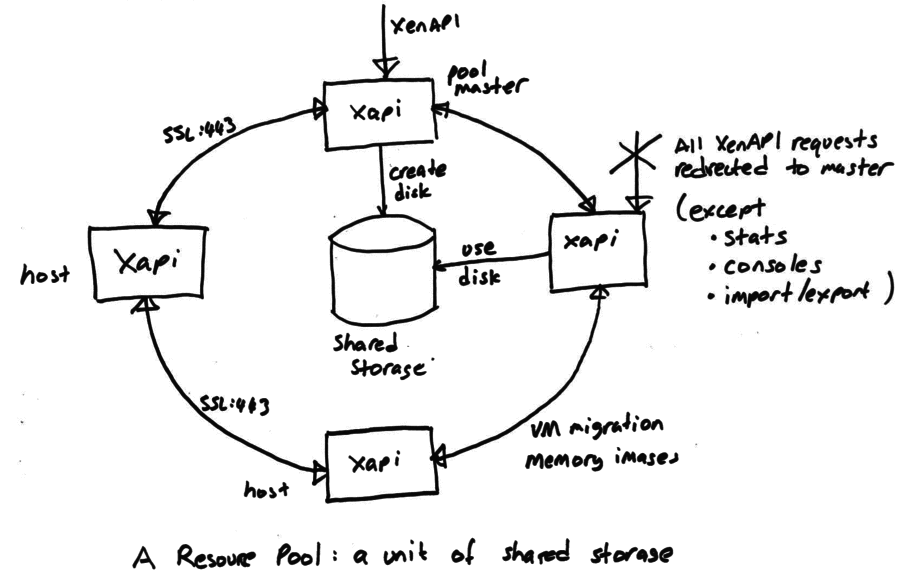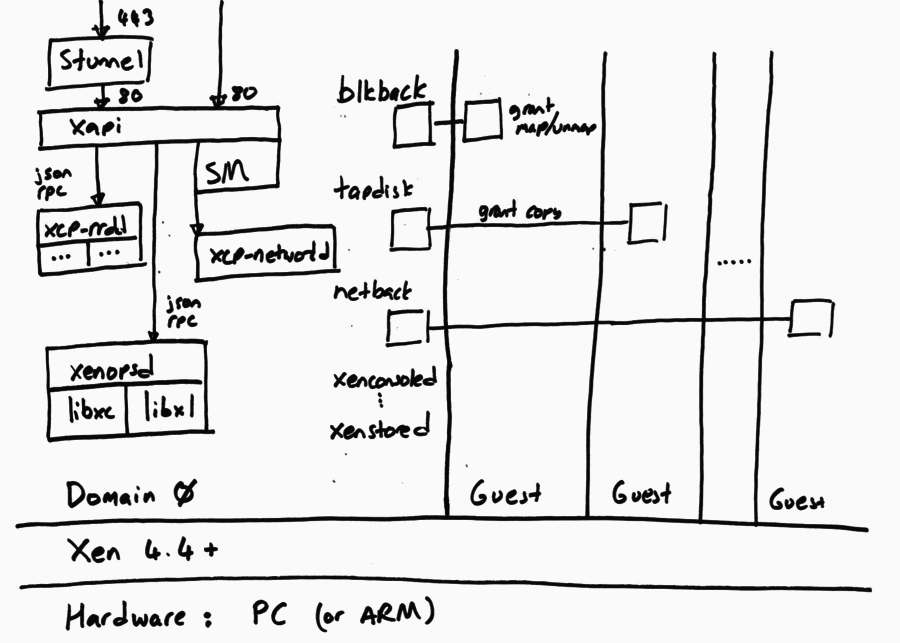The Xapi toolstack manages a cluster of hosts, network switches and storage on behalf of clients such as XenCenter, Xen Orchestra, OpenStack and CloudStack.
The most fundamental concept is of a Resource pool: the whole cluster managed as a single entity. The following diagram shows a cluster of hosts running xapi, all sharing some storage:

At any time, at most one host is known as the pool master and is responsible for co-ordination and locking resources within the pool. When a pool is first created a master host is chosen. The master role can be transferred
xe pool-designate-new-master)xe pool-emergency-transition-to-master)All hosts expose an HTTP and XML/RPC interface running on port 80 and with TLS/SSL on port 443, but control operations will only be processed on the master host. Attempts to send a control operation to another host will result in a XenAPI redirect error message. For efficiency the following operations are permitted on non-master hosts:
Since the master host acts as co-ordinator and lock manager, the other hosts will often talk to the master. Non-master hosts will also talk to each other (over the same HTTP and XMLRPC channels) to
Note that some types of shared storage (in particular all those using vhd) require co-ordination for disk GC and coalesce. This co-ordination is currently done by xapi and hence it is not possible to share this kind of storage between resource pools.
The following diagram shows the software running on a single host. Note that all hosts run the same software (although not necessarily the same version, if we are in the middle of a rolling upgrade).

The xapi toolstack expects the host to be running Xen 4.4 or later, on either x86 or ARM. The Xen hypervisor partitions the host into Domains, some of which can have privileged hardware access, and the rest are unprivileged guests. The xapi toolstack normally runs all of its components in the privileged initial domain, Domain 0, also known as "the control domain". However there is experimental code which supports "driver domains" allowing storage and networking drivers to be isolated in their own domains.
The toolstack consists of a set of co-operating daemons, building on top of the basic set common to all Xen hosts. We have:
All inter-daemon control within domain 0 takes place over named Unix domain sockets using a combination of json RPC and the XenAPI. Communication between Xen domains uses shared memory (via grant mapping or grant copy) and event-channels, all configured by parameters written to Xenstore.